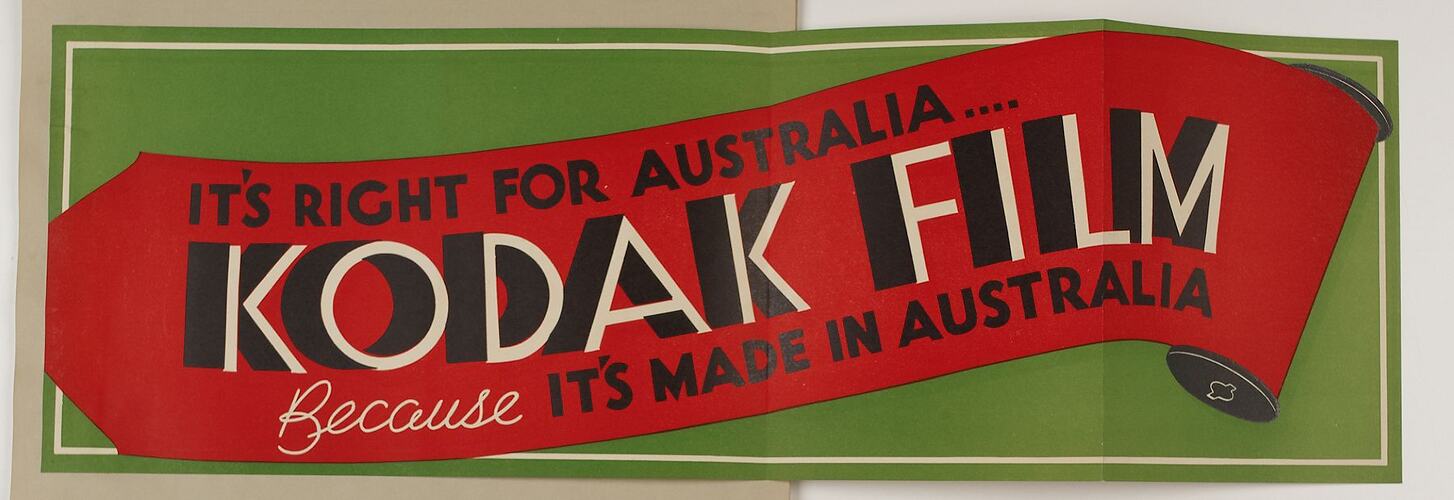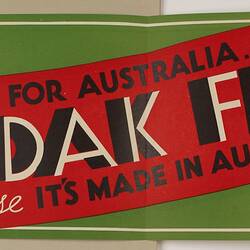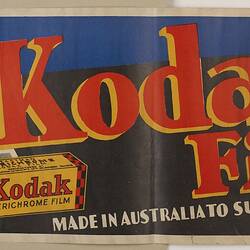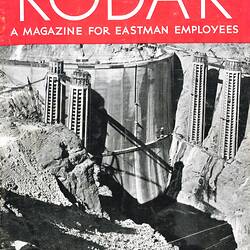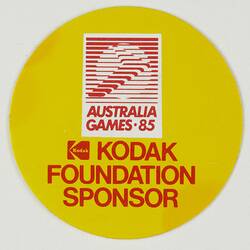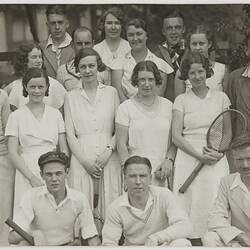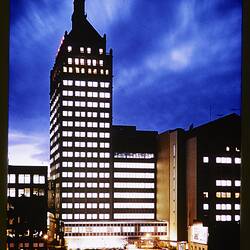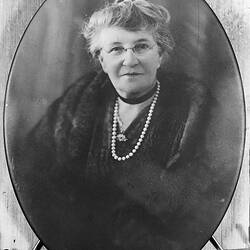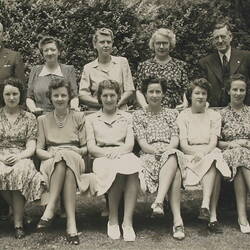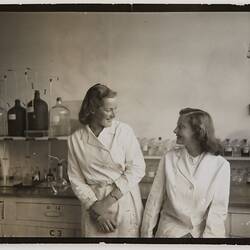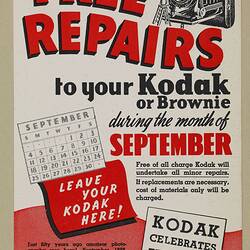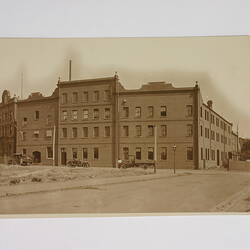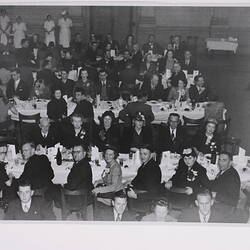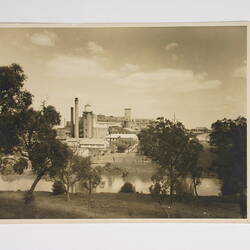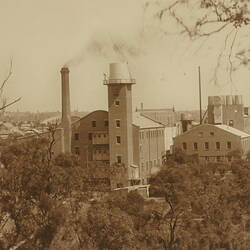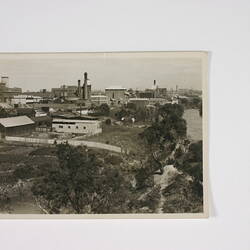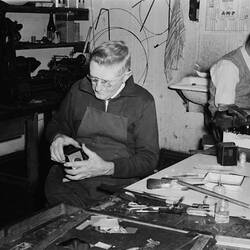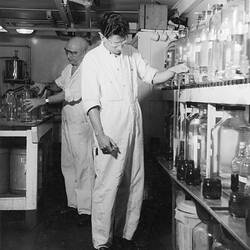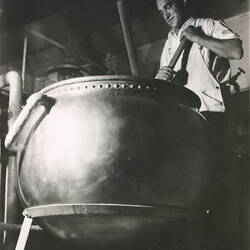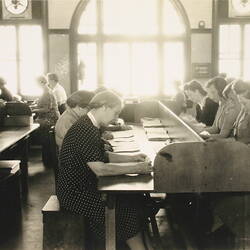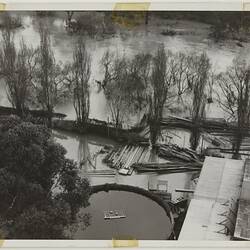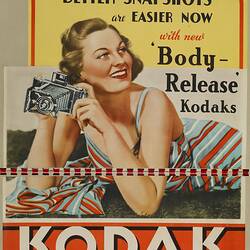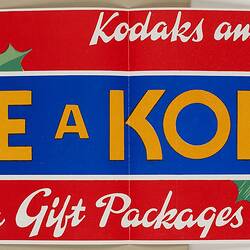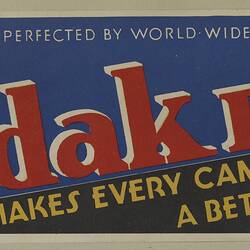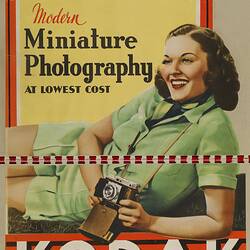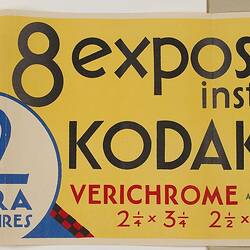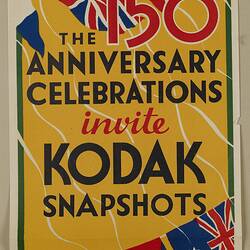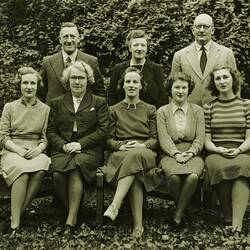The Kodak Heritage Collection is a unique and extensive collection that documents the history of the photographic industry in Australia through several related companies - Kodak Australasia Pty Ltd, and its predecessors, including the Austral Plate Company, Baker and Rouse Australia Laboratory, and Baker and Rouse Pty Ltd.
History
Kodak Australasia developed out of a merger, in the first decade of the 20th century, with Baker and Rouse Pty Ltd, a Melbourne photographic manufacturing business owned by Mr Thomas Baker and Mr John Rouse. This partnership had been formed out of the Austral Plate Company, founded by Thomas Baker beside the Yarra River in Abbotsford in 1884. For many years after the Baker and Rouse - Kodak merger, Thomas Baker and John Rouse retained executive roles at Kodak Australasia, leading the company to great success. Kodak Australasia continued to operate at the original Austral Plate Company factory site in Abbotsford until the late 1950s, when the company's success prompted a move from its crowded inner-city site to a larger, more modern, custom-built factory on a greenfields site in Coburg, in Melbourne's north. Dealing primarily with the production of chemical, plastic and paper photographic products, the Kodak Australasia manufacturing plants at Abbotsford and Coburg were highly specialised industrial sites.
Significance
Since its establishment in the early 20th century, Kodak Australasia Pty Ltd, and its predecessors, have been significant contributors to Australia's photographic history, in terms of developing the Australian photographic industry, promoting the adoption of photography and influencing the development of a local photographic culture.
Kodak Australasia Pty Ltd has been an important manufacturer and distributor of photographic products in Australia. The company made a wide range of products in Melbourne for both professionals and amateurs, and also imported goods from Kodak subsidiaries around the world. The products it made locally included photographic plates, film and paper, mounts, envelopes, processing chemicals, reels, cassettes, slide boxes, and cameras. Kodak Australasia Pty Ltd has also been successful in developing innovations in photographic chemistry and manufacturing technology.
The company has been an innovator in promoting photography to consumers, and it provided substantial education to the general public regarding the practice of photography, through text, audio and film based instructional initiatives.
Kodak is also known for fostering a responsible and modern work culture. The company employed generations of Melburnians, who typically spent their entire working life with Kodak. They included a number of families who themselves provided multiple generations of workers.
The Collection
In November 2004, as photography shifted from the silver halide process to digital imaging technology, Kodak Australasia Pty Ltd ceased manufacturing photographic products in Melbourne. Museum Victoria subsequently acquired thousands of documents, photographs and objects which trace Kodak Australia's history, and that of its predecessors. Kodak Australasia remains based in Melbourne, where it is now focused on new imaging interests.
The Kodak Heritage Collection documents the history not just of Kodak Australasia, but also of its predecessors the Austral Plate Company, and Baker and Rouse Australia Laboratory. The collection is extensive in its representation of the photographic industry in both Melbourne and Australia, and documents key themes such as photographic manufacturing; marketing and retailing; working life; and the history of photography. The artefacts in this collection strongly evoke the chemical basis of 'analogue' photography, which has now largely come to an end since the rise of digital photography in the early 21st century.
Manufacturing history is represented in the collection by raw materials, and finished products such as glass plates, roll film, photographic papers, chemicals, cameras and accessories, including film made in Kodak Australia's last production run at Coburg in 2004. Small scale manufacturing equipment, manufacturing specifications, factory signage, safety equipment, clothing, oral history interviews, photographs and moving footage have also been collected. There is also a small and fragmented, but highly important, business archive, which includes share ledgers and certificates, factory plans, minute books, salary records, production registers, correspondence, trade mark applications and visitors books.
Marketing and retailing is represented by point of sale, packaging, instructional and advertising materials, including a significant sub-collection of scrap-books containing posters and brochures from the pre-World War II period. These highlight the important role of graphic design and marketing strategies in Kodak Australasia's success, and its relationship with other Kodak companies worldwide.
Working life is represented by clothing, sporting trophies, posters, ephemera, photographs and oral history interviews with staff.
The history of photography is represented by examples of early photographic formats and processes including daguerreotypes, glass plates, tintypes, ambrotypes and lantern slides.
The Registration and Research Project
The registration and research of the Kodak Heritage Collection is a long-term project being undertaken by museum staff and volunteers, including retired Kodak Australasia staff. The curator welcomes interest from previous and current staff who would like to contribute their expertise and memories in the documentation of the history of the company. It is anticipated that the large collection will take some years to fully document. As it is processed, the collection will become available to the public via the History and Technology Department's Collections Online website.
References:
Beale, N, (no date). History of Kodak, in Possession of Kodak Australia, Melbourne.
Davies, A Stanbury, P (1986). The Mechanical Eye in Australia Photography 1841-1900, Oxford University Press, p. 54.
Leggio, A (2006). A History of Australia's Kodak Manufacturing Plant, Conservation of Paper, Books and Photographic Materials; Symposium Proceedings, Australian Institute for the Conservation of Cultural Material [ICCM], Wellington, New Zealand, 19-21 April 2006, pp.147-158.
Lowe, T (1974). The Thomas Baker, Alice Baker and Eleanor Shaw Medical Research Institute: The First Fifty Years, Trustees of the Institute, Melbourne, pp.9-10.
Gooch, L & Leyden, F. (17 September 2004). 'Kodak sacks 600 workers', The Age.
More Information
-
Keywords
Advertising, Advertising Signs, Aerial Photographs, Audiovisual Equipment, Building & Construction, Buildings, Business Management, Camera Accessories, Camera Clubs, Cameras, Factories, Factory Construction, Factory Workers, Flooding, Floods, Functions, Gardens, Industry, Interior Design, Leisure, Manufacturing, Manufacturing Equipment, Manufacturing Workers, Manufacturing Works, Motor Cars, Movie Cameras, Occupational Health & Safety, Offices, Photochemicals, Photographic Accessories, Photographic Equipment, Photographic Films, Photographic Papers, Photographic Processing Equipment, Photographic Products, Photographic Studios, Photography, Posters, Promotional Materials, Recreation, Research Laboratories, Retailing, Safety Equipment, Safety Wear, Shops, Social Functions, Sport, Sporting Clubs, Sporting Teams, Staff Amenities, Streetscapes, Working Life
-
Localities
Abbotsford, Victoria, Australia, Coburg, Victoria, Australia, Melbourne, Victoria, Australia, Australasia
-
Authors
-
Contributors
-
Article types
